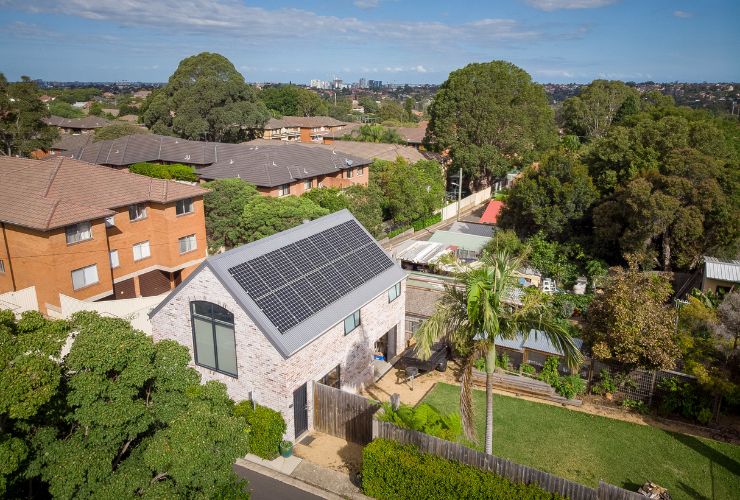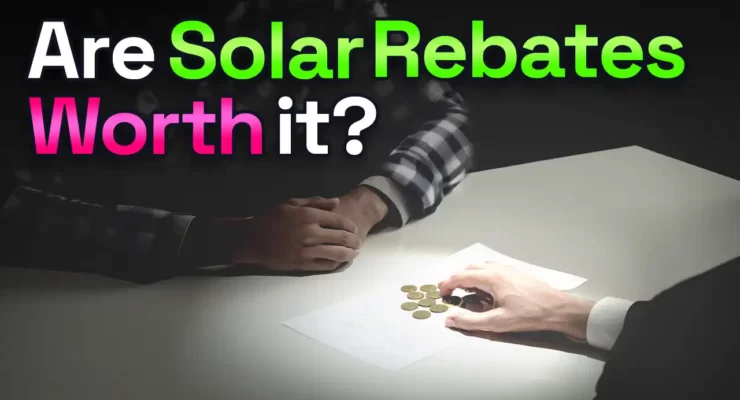Fast read
Solar rebates in Australia have positively influenced the industry by making photovoltaic systems more accessible and mainstream and creating employment opportunities.
From the establishment of the “Renewable Energy Target” in 2001, over 3.4 million solar systems have been installed by mid-2023. However, the rebate schemes have their drawbacks, incentivising lower-quality products and installations, leading to premature system failures and negative industry stigma.
The STC model promotes cheaper equipment and allows multiple claims for replacing faulty systems, which can disadvantage high-quality solar providers.
The rebate system will end by 2030. Balancing cost and quality is important to support the solar industry's reputation. Consumers are encouraged to prioritise quality solar products and engage with reputable suppliers and installers for their renewable energy needs.
Have the solar rebates been good for the industry?
This is a fascinating question and one that has been posed and debated for many years. Solar rebates are incentives for purchasing solar systems and other renewable energy products. These products include solar hot water systems. Solar rebates help consumers save money.
These benefits are usually in the form of subsidising the initial cost of a solar power system. Also, some battery rebates like in the ACT, are traditionally a State-based initiative. Also, they sometimes have a volume target and a cut-off date.
When the Howard Government proposed and implemented the initial $8000 solar rebate in 2007/2008, solar panels cost over $5 per watt. The average rebates for solar panels have decreased to less than $3000 per household. Should the solar rebate continue since solar panels and inverters are now much cheaper?
The solar rebate benefits
Solar rebates help make solar panels more affordable for Australians, benefiting both homeowners and businesses in the solar industry. From 2007 to 2008, solar technology was exceedingly expensive. The Federal Government rebate scheme helped more homeowners afford solar panels.

Supporting growth in the solar industry
Incentives and rebates introduced in the last 20 years have helped make solar energy more popular and successful. The key reasons for purchasing solar were and still are a reduction in electricity costs primarily and reducing one’s carbon emissions as a 2nd less strong reason.
Also, the number of people employed within the renewable energy industry has increased significantly. The number of people working full-time in rooftop solar in Australia has almost doubled. In 2009, there were 7,000 workers, but by 2019, there were over 13,070. This data comes from the Australian Bureau of Statistics.
Rebates boosted the industry by providing electricians and companies with confidence and government support to sell solar panels. This attracted more people to join the industry.
By growing the industry, the STC rebate also helped to create the skills and experience to design, install and manage solar systems. So the rebates have supported the drive to create thousands of jobs. Both skilled trades, from apprentices to accredited electricians with career pathways, to marketing professionals and specialised distributors and their staff.
Getting towards the end of the rebate scheme
Solar rebates have changed over time, with the amount decreasing each year as solar product costs go down. The current rebate program will end by 2030. Reducing solar rebates gradually helps transition to a competitive market in a few years.
The downside of the current solar rebate design
The application of rebates as a standard rate is based on the capacity of the panels. Regardless of their performance, it creates an environment where using the cheapest products available to sell and install for customers is advantageous for unscrupulous companies. The rebates distort the consumer’s decision favouring the more affordable, less reliable products.
Also, while the government incentives have allowed the solar industry in Australia to grow over the last 15 to 20 years, this has not necessarily been in the best interests of the quality-focused part of the renewable industry. It also did not provide the best renewable output result for the country.
Who could forget the scandalous pink bat’s scheme under PM Kevin Rudd?
The direct government support for the rooftop solar industry has been the Small Scale Technology Certificates (STCs). This was created by installing approved solar panels in a solar system for a home or small business (under 100kw).
The number of certificates created by installing a solar system is determined by a standard calculation of how much electricity the system can be expected to generate from the date of installation up to the year 2030. This makes several inaccurate assumptions on not just the direction of the panels but does not account for shading, quality and longevity of the products used.

The solar rebate scheme makes the cheap look even cheaper
For example, if we are to look at a 6.6 kW system, you can see the net buy price of a cheap, low-quality system for under $4,000, while a quality 6.6 kW system may be $7,000 or more. At face value, you pay 75% more for the quality system, so many customers would choose the cheaper option.
After the STCs/rebates have been taken into account in our sample the customer received $2750 in rebates for a 6.6 kW solar system.
So, the real cost and value of the solar systems are as follows:
Cheap low quality system $4000 + $2750 (rebate) = $6750
Quality system $7000 + $2750 (rebate reduction) = $ 9750
Which is only a 44% price premium to the quality system rather than the 75% price premium shown net of rebates.
Therefore, rebates distort the relative value of the purchase prices when one compares quality and cheap crap solar. So unfortunately the rebate encourages lower-standard solar products to be purchased in bigger numbers.
Another way cheap becomes cheaper
A further aspect of the solar rebate and the push to lower pricing is that these unscrupulous companies also try to cut costs on installation practices. When installation guidelines are not followed, many systems do not meet safety standards and can be dangerous during inspections. Following best practices for installation is important.
The use of poor-quality substandard panels, inverters, isolators and other solar system-related products has also seen that these products have not performed as expected and, in many cases, failed.
This has created an issue where systems must be removed. Often, new items were bought with rebates, but they didn’t save the environment as planned.
The lack of scrutiny did not help
Further to this, the structure of the STC and rebate scheme and the lack of proper scrutiny by Government agencies also allowed for these crap solar systems to be replaced and the rebates to be claimed again and again. Effectively double and triple-dipping, putting a quality solar system at an enormous disadvantage.
With the failure of poor-quality products used within the scheme many bright and cheerful solar companies that have installed solar systems with these low-cost offers have gone out of business. They can’t afford to fix problems with cheap products because the original manufacturers are gone. This means they have to replace faulty units under Australian consumer law.
As a result, many homeowners have found that they have a cheap solar system that is not operational. It has often failed without recourse for repair or replacement under its warranty entitlements. Therefore such owners are forced to cover the cost of any repair or removal from their pocket.
A negative stigma for cheap solar – but then again, Australians are gamblers by nature
The above situation has created a negative stigma for the solar industry. Some people think the solar industry is a scam and doesn’t help the environment or make money. However, the negative aspects are not necessarily related to a rebate but to how it is calculated and administered.
A rebate for the electricity created over time would have been more beneficial. As it is awarded based on the actual value of what the solar system has provided.
However, this type of support would not have been as effective in attracting households to solar as the PV system would have been more expensive to purchase upfront.
The rebate scheme’s management had room for improvement
The administration of the rebate scheme and accountability could have also been better managed to ensure quality. Still, the Federal Regulator has stayed silent for decades on this issue and any potential recommendations. Only in the past years, after 800 cheap and cheerful companies sold crap and then closed their doors and did a runner, did the regulator and the CEC start acting.
In hundreds of thousands of instances, these cheapies broke down and must be turfed or recycled well before they created the green electricity for which they earned rebates. Many cases exist where they even broke down before they generated the amount of energy it took to make them in the first place. So ironically, the solar rebate has contributed in the case of cheap solar to more climate gasses.



